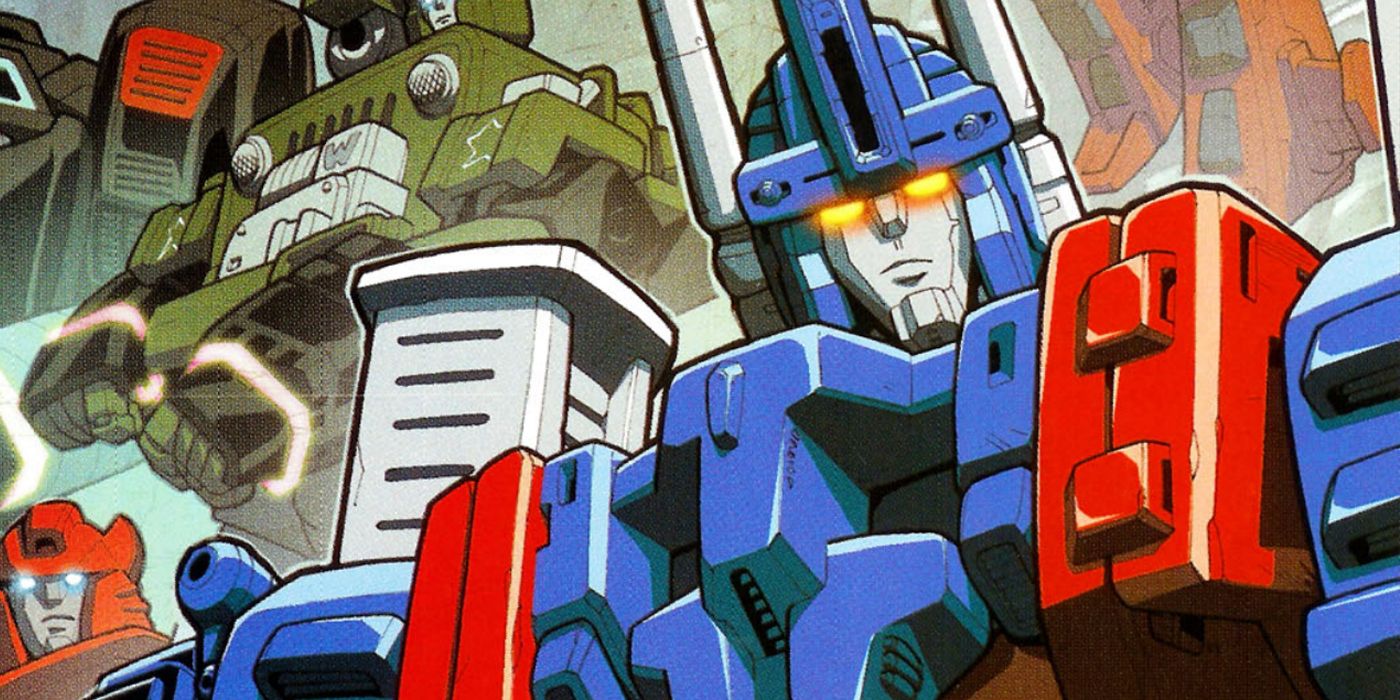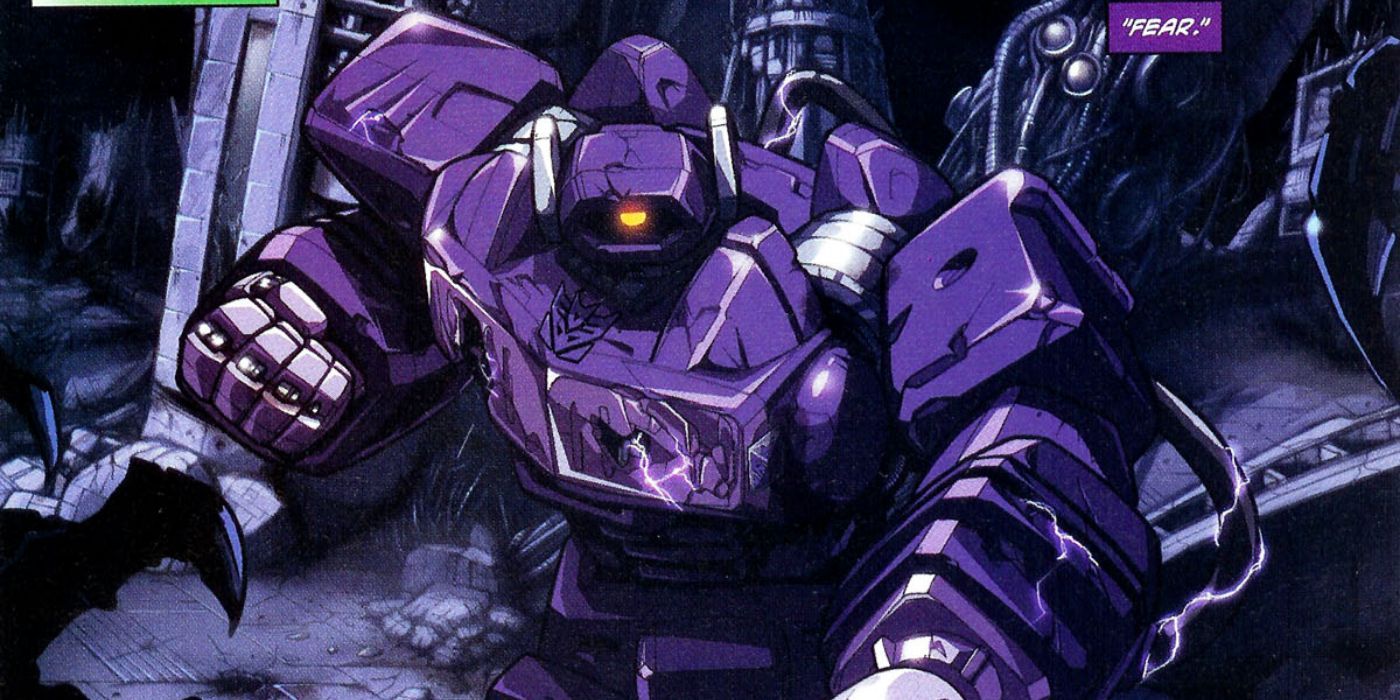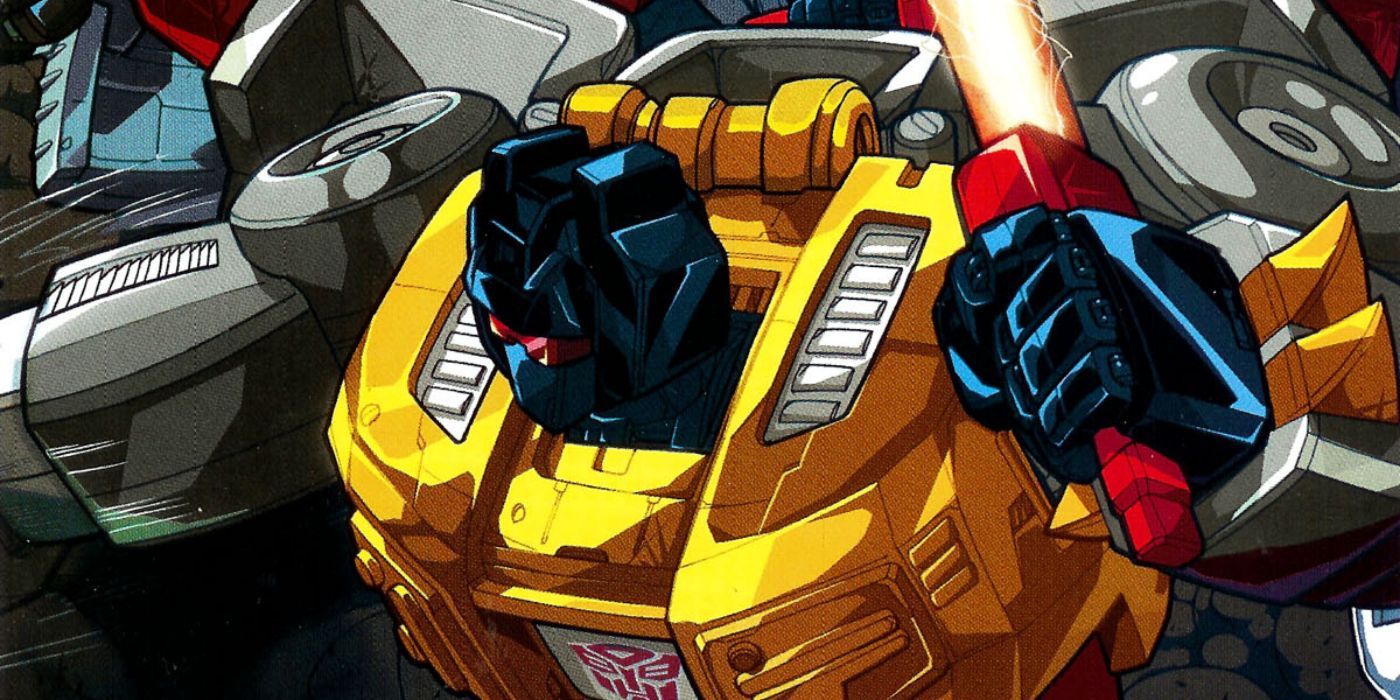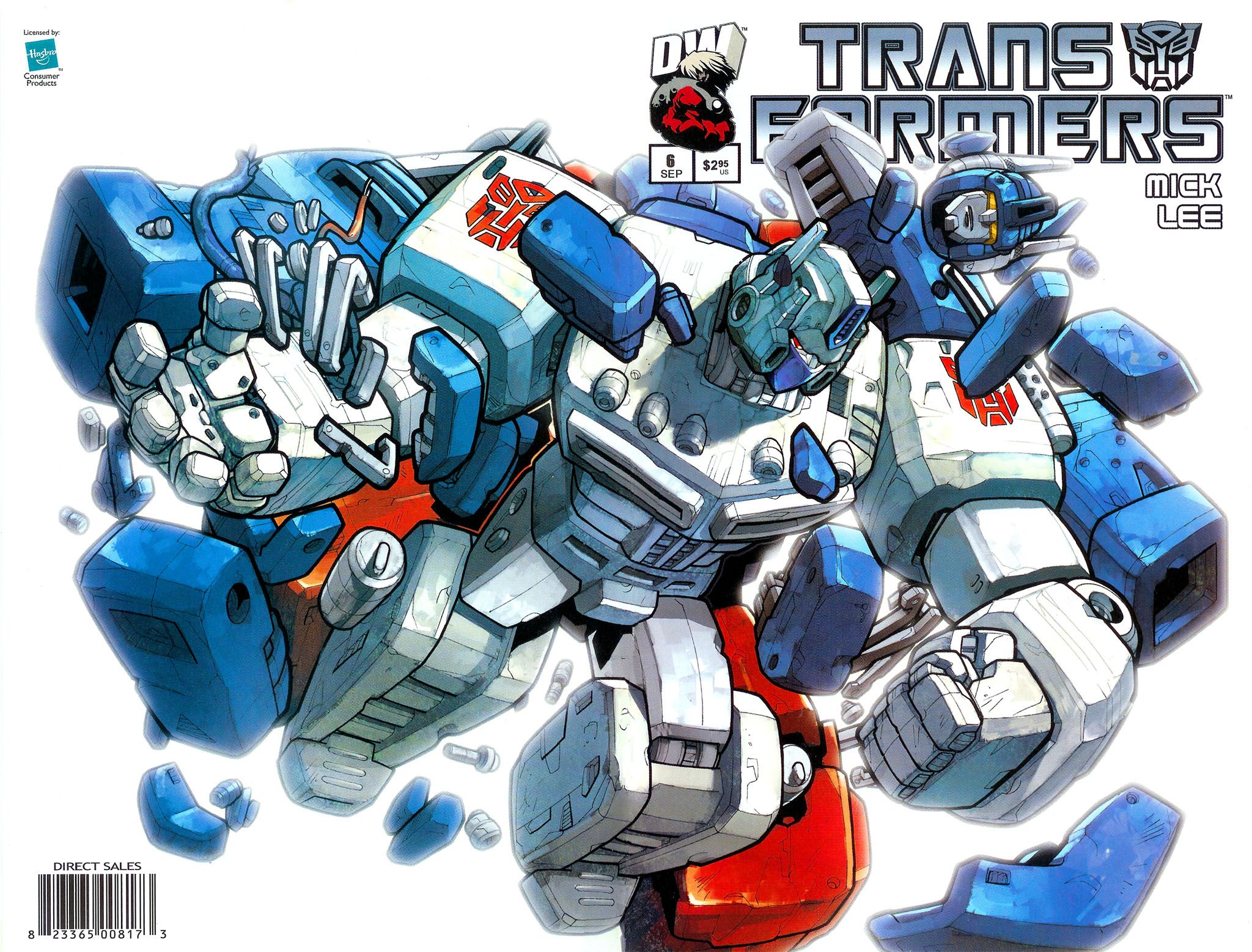Welcome to the 14th installment of Nostalgia Snake, a look at 2000s revivals of 1980s properties; revivals now so old they're also quite nostalgic. (Hence the snake of nostalgia eating itself.) And if you have any suggestions for the future, let me hear them. Just contact me on Twitter. This week, Dreamwave's second attempt at continuing the "Generation One" continuity of Transformers, which encompassed no small amount of fan service.
Dreamwave's association with Hasbro's transforming Robots in Disguise has its origins in a 2000 article in Wizard magazine, which had the editors commissioning popular artists to reimagine 1980s toy properties. This piece featured Dreamwave founder Pat Lee's anime-influenced rendition of the Transformers characters and was reportedly a hit within Hasbro's offices. When shopping around the possibility of reviving a Transformers comics series, it was reported that Hasbro used the piece to show publishers what they expected from the comic. Dreamwave, which was publishing its comics through Image at the time, secured the Transformers license from Hasbro and proceeded to establish its own independent publishing company.
How Dreamwave Corrected Course
The introductory Transformers series from Dreamwave, Prime Directive, was a top-seller, joining other revived 1980s properties in a wave of hit releases. While dedicated Transformers fans were thrilled to see the first new comics series in nearly a decade, some elements of the miniseries left fandom cold.
Prime Directive was set on Earth and focused heavily on the Autobots' relationship with their once cheerful teenage sidekick Spike Witwicky and the political fallout of their arrival in the United States. A segment of fandom always resents the presence of humans in Transformers stories, and many readers were quick to criticize Pat Lee's increasingly wonky rendering of the story's flesh-and-blood cast. The miniseries was also condemned for resorting to shock value, with fans rejecting the violent deaths of established characters and the sudden betrayal of Grimlock, the beloved Dinobot leader who joins the Decepticons in a climactic sequence. The series' concluding issue had the Autobots as pariahs following their disastrous battle against the revived Decepticons.
Original series writer Chris Sarracini was scheduled to return for the second miniseries titled War and Peace and continue the continuity established in Prime Directive. Sarracini even penned a preview for War and Peace in the added pages for the first miniseries' trade paperback that featured a spaceship sporting the Autobot insignia crashing into the Arctic Ocean while, perhaps relatedly, Optimus Prime endures what appears to be a seizure.
For unknown reasons, Sarracini didn't return for the second series, and Brad Mick (the pen name of author James McDonough) stepped in as his replacement, while Pat Lee returned as penciler. Visually, War and Peace does surpass its predecessor, with more consistent art and an increasingly remarkable coloring technique that captures the look of the cartoon's best episodes.
The first issue of War and Peace has Grimlock turning against the Decepticons, and the series goes on to give him numerous hero moments. The death of fan-favorite Autobot Wheeljack is also retconned shortly into the new series, as we're told his previous on-panel death turned out to be merely a close call. The downer ending that had the Autobots as feared outcasts is largely ignored, and fans had little to dread regarding Lee's interpretation of the human cast. Except for a single page that features a few military figures monitoring the Transformers, there are no humans here.
More…Much More Fan Service
The premise of War and Peace has the marooned Transformers encountering Cybertronian agents on Earth who claim to represent an Autobot-Decepticon alliance. The cast returns to Cybertron, where the ruthless Shockwave has united all Transformers under his leadership. Optimus Prime is, naturally, skeptical.
Brad Mick's plot goes through numerous twists and turns while also keeping the diehard fanbase in mind. Numerous homages to the fan-favorite Transformers: The Movie from 1986 populate the story, utilizing movie cast members like Hot Rod, Blurr, Arcee, and Ultra Magnus, in addition to teasing future appearances from Wreck-Gar and even the planet-devouring Unicron. The movie's famous "Death of Optimus Prime" sequence is acknowledged when Ultra Magnus' apparent corpse also turns a shade of gray. In one scene, Starscream sends an injured Megatron into space, recreating a memorable moment from the movie. During his last-page cameo, discovering Megatron's body, Wreck-Gar also quotes a Monty Python sketch, referencing his movie voice actor, Eric Idle.
The long-running Marvel Comics adaptation is also homaged, as Mick has the Transformers use the term "Breem" as a unit of measurement, a phrase coined for the '80s Marvel comic. Perhaps the most famous cover of the Marvel series is Mark Bright's painted cover for Transformers #5, which declares "The Transformers Are All Dead," a line we see written backward on one of Shockwave's heads-up displays. Allusions to the titles of two animated series episodes, "The Big Broadcast" and "Countdown to Extinction," also make their way into the miniseries.
Nods to the physical Transformers toys are also peppered throughout War and Peace. Smokescreen proves his Autobot allegiance by rubbing his chest to reveal the Autobot insignia, which fans will recognize as a reference to the "rub-sign" decals of the 1980s action figures. (Created by Hasbro to distinguish their toys as the genuine model and not one of the era's many competing transforming robot toys.) Another heads-up display lists Jazz with two names, an "A" (American) and "J" (Japanese) name. The "J" name is Meister, a reference to the name of his Japanese toy, Meister.
Brothers in Arms
Another aspect of the toys inspired more than a quickie in-joke for fans. War and Peace is the first piece of Transformers' comics continuity to establish that Optimus Prime and Ultra Magnus are brothers. (A rebooted continuity for 2001's Robots in Disguise anime also established this, but War and Peace is the first story reflecting the Generation One canon to treat the duo as siblings.)
Any number of '80s kids likely had this as their personal head-canon, thanks to Hasbro reusing Optimus Prime's original body, painting it white and attaching a removable head, fists, and chest plate, then releasing the figure as Ultra Magnus. Before this miniseries, the white robot at the toy's base was ignored in the tie-in material and package art, treating Magnus's default robot form as the red, silver, and blue image reflecting the fully assembled toy. Kids were meant to politely ignore just what Ultra Magnus looked like under all the removable accessories.
Though the specifics are left vague in War and Peace, readers discover that Optimus Prime and Ultra Magnus do view each other as brothers, forcing Prime to question if his sibling has betrayed him by siding with Shockwave. When Shockwave declares that Prime's team of Autobots doesn't fit with his new vision of Cybertron, it's Ultra Magnus who eventually steps up and defends his former teammates.
During the final battle with Shockwave, an injured Ultra Magnus is forced to shed his bulkier form, revealing the smaller white robot inside -- the monochrome twin of Optimus Prime, of course. In spite of his injuries, Ultra Magnus manages to overpower Shockwave and throw him into the mysterious glowing pit beneath Vector Sigma, the "mega-computer" located in a spherical chamber deep within Cybertron.
This moment marked the first time Ultra Magnus was rendered as the "white Optimus Prime" in any media and has paved the way for Hasbro to release various versions of the toy acknowledging his connection to Optimus Prime. A variant cover for War and Peace featuring Ultra Magnus in his white form became an instant collector's item, thanks to some complications at the printers that limited its print run. Connecting these two characters is either the height of gratuitous fan service or a clever homage to the franchise's roots, but either way, it clearly provoked a response from the fandom.
The overall reaction to War and Peace was favorable, and Brad Mick was given the freedom to pursue many of these concepts in the subsequent Dreamwave releases. It's clear the miniseries was created with genuine affection for the lore and the environment of the early 2000s, when so many fans were still rediscovering their love of the Generation One material and connecting with other enthusiasts online, making the book a fitting tribute.




